Blackcurrant berries contain many vitamins and useful trace elements, which puts them one step higher than red fruits. Housewives even learned to use the leaves in conservation and pickling. A prominent representative of the chokeberry culture is the Sokrovische currant variety, bred by Siberian breeders.
Variety description
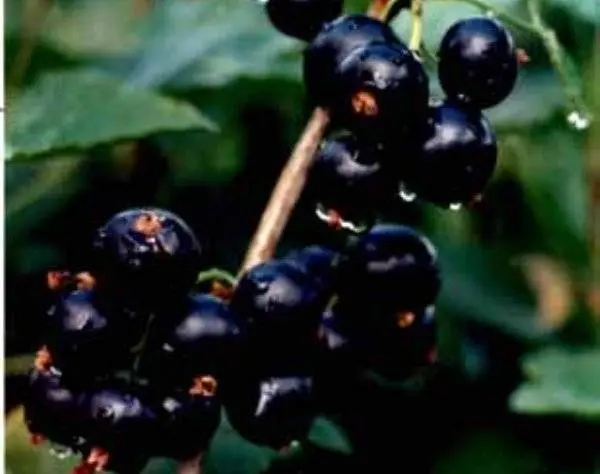
Treasure currant bushes grow up to 1,5 m high. The branches do not fall apart on the sides. The bush is formed of medium density. Young shoots grow even without bends. The yellow-green skin is covered with a small edging. On older branches, the bark becomes brown. The leaf shape is three-pointed. A wrinkled skin is observed on the surface of the leaf plate. The leaf grows on short and thick petioles.
The flowering of the currant is friendly. Small flowers are collected on racemes. The petals are yellow-green in color with a creamy tinge. The shape of the flower resembles a small cup. Clusters grow single or fused in threes. Short stalks are covered with fine edging. Up to ten berries are tied on one bunch.
Considering the Treasure currant, variety description, photos, reviews, you should pay attention to the fruits. A feature of the culture are large black berries with a purple tint. The mature fruit weighs 1,6–2,1 g. The berries grow the same size, rounded and slightly oval. The pulp contains many small grains. The peel is covered with a slight coating, which gives it a matte finish. However, after rain or watering, the berries shine, reflecting sunlight. The skin is thin, almost not felt when eaten. The taste of the berries is sweet with a slight sense of acidity.
Fruit ripening period is early. Currant bushes winter well, are slightly affected by fungus and mites. A distinctive feature of the Treasure variety is self-pollination. Harvest can be obtained without the participation of bees and other insects. During the season, about 4 kg of berries are harvested from one blackcurrant bush. In the harvest year, the branches are not able to support the weight of the fruit on their own. To prevent the bush from falling apart, it is propped up with stakes or tied.
Black currant Treasure has many positive qualities, but gardeners have identified some shortcomings. The main disadvantage is the rapid aging of the shrub. The variety is demanding on the observance of agricultural technology and does not tolerate drought well.
The video tells about the variety of blackcurrant Treasure:
Rules for planting seedlings
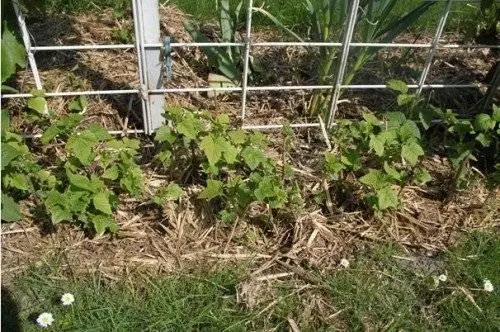
The site for planting blackcurrant seedlings is prepared in advance. The soil is dug to the depth of the bayonet, all weeds and their roots are removed. The place is chosen sunny, well ventilated, but without drafts. Currant grows well on slightly acidic soil. Increased acidity is quenched with chalk, old clay plaster or dry cement. Depending on the acidity index, from 0,5 to 1 kg of desalination agent is mixed into the hole when planting a seedling. Crushed egg shells give a good result.
Currant Treasure takes root in spring, but autumn seedlings take root better. The root system of the bush is in constant development. Before the onset of winter, the currant will get stronger, easily endure frosts, and in the spring will give a strong increase.
When buying blackcurrant seedlings, you need to do a thorough inspection of the entire bush, including the root system. Branches should be undamaged with healthy buds. The bark is uniform without spots. The length of the root system is from 15 to 20 cm. If the seedling is sold in a pot, it is taken out along with a clod of earth. The soil should retain its shape and be all braided with thin roots.
The rules for planting blackcurrant Treasure consist of the following points:
- Preparation of the beds for planting seedlings begins two months in advance. First, during digging, the roots of weeds are removed. Variety Treasure loves nutrients. To enrich the soil in the garden for every 1 m2 scatter 10 kg of compost or humus, 50 g of potassium and 100 g of superphosphate. The soil, together with fertilizer, is dug up to the depth of a shovel bayonet.
- Before planting, the roots of a blackcurrant seedling of the Treasure variety are soaked in water. For better development, you can add the drug Kornevin.
- While the seedling is soaking, start digging a hole. A pit is dug 40 cm deep and 50 cm in diameter. A bucket of fertile soil mixed with compost is poured into the bottom. At high acidity, a desalination agent is added. Pour 5 liters of water into the hole.
- A blackcurrant seedling is lowered with its roots to the bottom of the pit, tilted at an angle of 45о and begin to gently sprinkle with loose soil, deepening the root collar up to 8 cm.
- The upper part of the seedling is cut off with secateurs. A branch with four buds is left above the ground. Pruning is required, otherwise the bush will quickly grow old.
- The soil around the seedling is lightly rammed by hand. An earthen rim is poured around the hole and two buckets of water are poured. After the liquid has been absorbed, the damp soil is covered from above with a mulch of peat or sawdust 5 cm thick.
If several currant bushes of the Treasure variety are planted on the site, then a distance of 1 m is maintained between the bushes. On the plantations, aisles of 2 m wide are arranged for ease of maintenance and harvesting.
Care for adult bushes
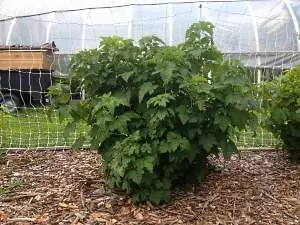
According to the description, the Treasure currant variety is undemanding in special care, but the bush cannot be left to grow to its own devices. The culture necessarily requires watering, top dressing, pruning and weeding.
In order for the roots of blackcurrant to receive oxygen, you need to loosen the soil. It is advisable to do this after each watering. Weeding is carried out as the grass grows. Loosen the soil should be carefully, shallow. The root system of currant varieties Sokrovische is located in the upper layers of the soil and one should try not to damage it with a chopper. If there is no time to often loosen the soil, then it is enough to perform the procedure twice per season: in the spring during top dressing and in the fall after harvesting the berries.

The intensity of watering the Treasure variety depends on weather conditions, but currants need water at four important stages of life:
- with the appearance of an ovary;
- when the berries begin to ripen;
- at the end of the harvest;
- in late autumn after the leaves have fallen.
In dry weather, blackcurrants are watered abundantly, more than one bucket per bush. However, water should not stagnate in the hole. Soil moisture to a depth of 50 cm is considered optimal.
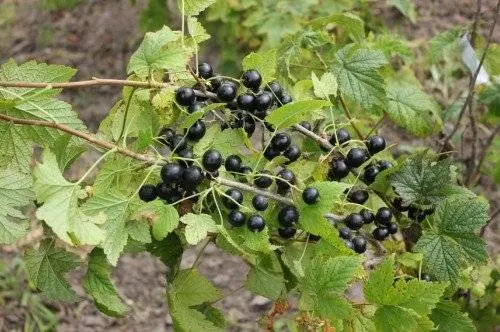
Variety Treasure responds well to top dressing. To increase the yield, fertilizers must be applied twice a season. In spring, bushes up to four years old are fed with 50 g of urea. For old currants, the amount of fertilizer is reduced to 30 g. In the fall, after harvesting the berries, each bush is fed with 5 kg of compost, 20 g of potassium and 50 g of superphosphate.
Four times a season, the Treasure variety needs liquid fertilizers:
- spring when buds open;
- at the end of flowering;
- when the berries begin to ripen;
- at the end of the harvest.
Liquid fertilizer is bird droppings infused in water at a rate of 10:1. You can mix 4 part of mullein in 1 parts of water. When using mineral fertilizers, 10 g of potassium and 10 g of phosphorus are added to 20 liters of water. Any liquid top dressing is poured under each currant bush 1 bucket.
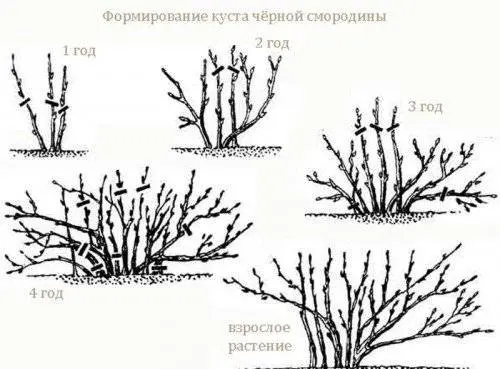
Pruning currant bushes of the Treasure variety is required. A neglected shrub will not bring a harvest and will quickly grow old. Formation is done every autumn after the leaves fall. The pruning pattern looks like this:
- The top is cut off from the planted seedling, leaving a twig with four buds above the ground.
- In the second year, all grown branches are cut, leaving shoots with 4–7 buds.
- In the third season, all old branches and long new shoots are shortened by about 1/3.
- Starting from the sixth year, all the old branches are cut out from the bush. Further formation occurs according to the considered scheme.
The period from 5 to 7 years of life for the blackcurrant of the Treasure variety is considered the peak of full fruiting. The bush at this time should consist of 10-15 full-fledged developed branches.
Additional pruning can be done in early spring. The procedure is aimed at removing frozen and snow-damaged branches. Pruning is carried out before bud break.
Disease control
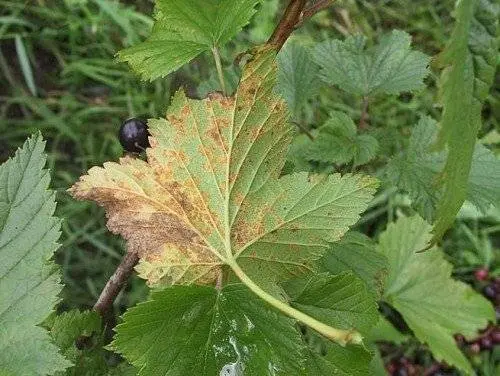
Variety Treasure is considered resistant to diseases, but preventive measures are needed. Most pests breed in dense thickets of grass. The easiest way to get rid of the enemy is timely weeding.
Since autumn, parasites hibernate on currant branches. In order to prevent their awakening, in the spring the bushes are poured from a watering can with hot water at a temperature of 60–70оWith the addition of soda. A hot shower additionally stimulates currants, accelerates sap flow, and awakens the kidneys.
Reviews
About the blackcurrant Treasure, the reviews of many gardeners are the most flattering. Summer residents fell in love with the variety because of the stable yields of tasty large berries.









